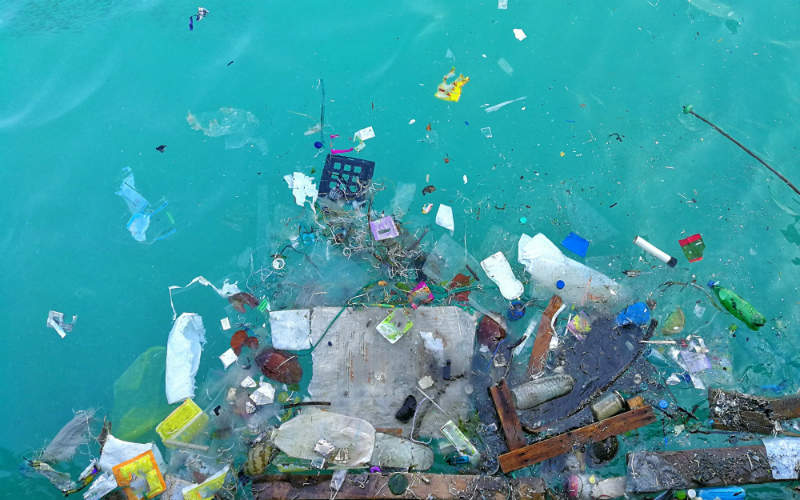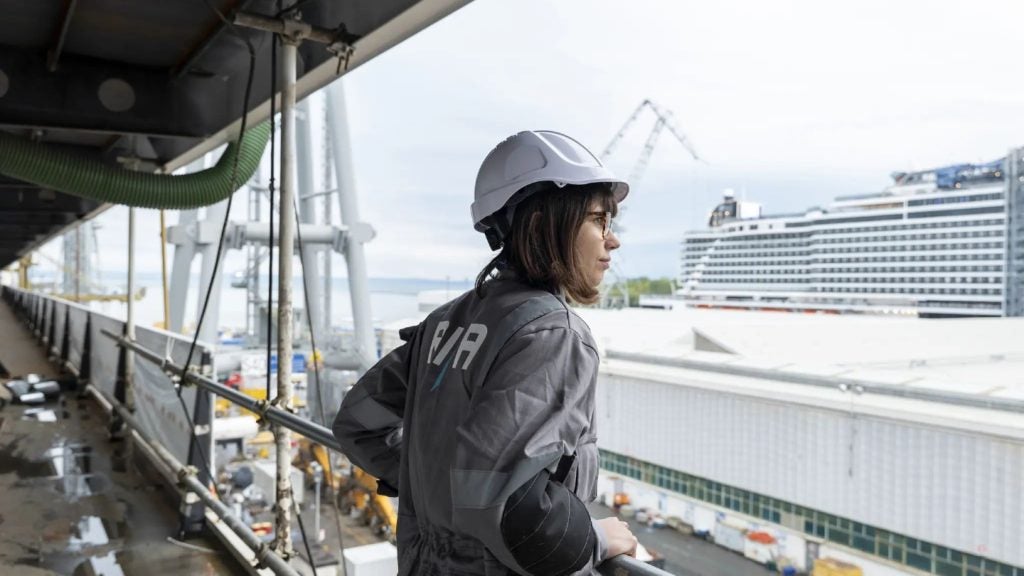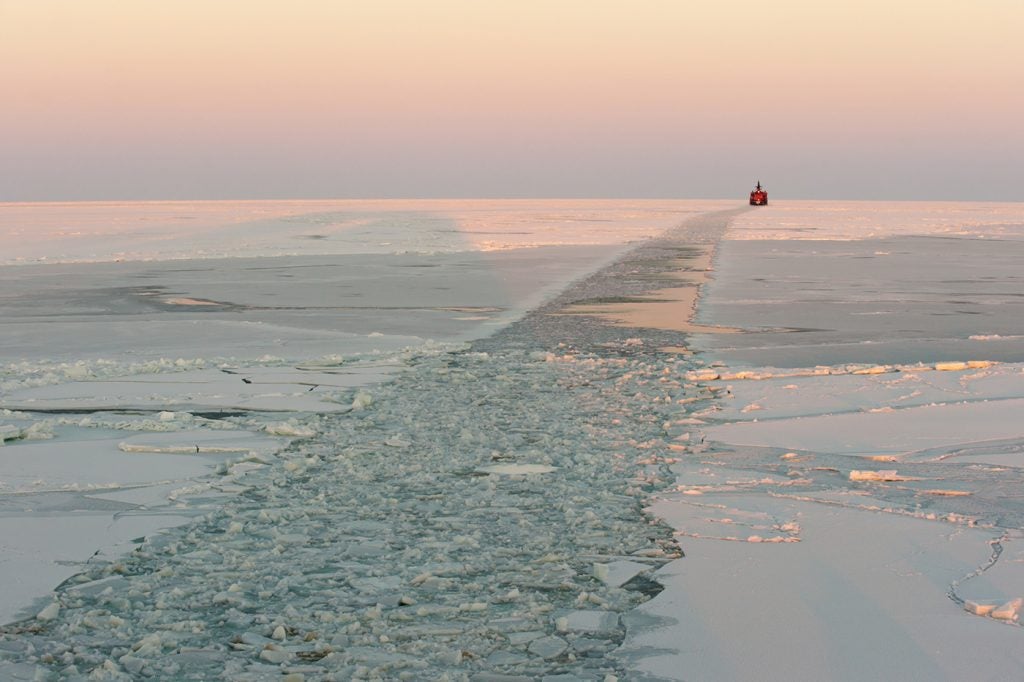
Hovering just over 1,000 nautical miles off the coast of San Francisco, a vortex of marine debris, trash and plastic has steadily accumulated to a gargantuan size.
Scientists are finally getting round to cleaning up the so-called Great Pacific garbage patch, but it is symptomatic of a larger problem. Millions of tonnes of plastic and other forms of marine debris are funnelled into the sea every day, damaging wildlife and biodiversity.
The general consensus is that land-based sources, including litter deposited in rivers or on beaches, are to blame for the unfathomable levels of trash in the ocean. However, as the fight to clean up the oceans intensifies, the maritime industry is facing its own share of scrutiny over practices, with environmental organisations claiming that ships and ports need to do more to face up to their own contribution to this global crisis.
While land-based sources account for an estimated 80% of marine litter, sea-based sources reportedly count for the remainder and areas of high shipping activity can see a large amount of waste. According to the Dutch Coast Guard, the maritime industry accounts for 40% of trash in the heavily trafficked North Sea.
In tandem with the International Maritime Organization’s (IMO) latest steps to address shipping’s environmental impact, the sector is also under increasing pressure to ensure waste is handled and monitored effectively.
Regulating maritime waste
The industry’s impact is certainly not due to a lack of legislation. Alongside the IMO, major seafaring nations have already adopted a number of international conventions to address the issue over the years, ranging from the United Nations Law of the Sea Convention, to the International Convention for the Prevention of Pollution from Ships (MARPOL).
How well do you really know your competitors?
Access the most comprehensive Company Profiles on the market, powered by GlobalData. Save hours of research. Gain competitive edge.

Thank you!
Your download email will arrive shortly
Not ready to buy yet? Download a free sample
We are confident about the unique quality of our Company Profiles. However, we want you to make the most beneficial decision for your business, so we offer a free sample that you can download by submitting the below form
By GlobalDataSince its adoption in 2013, MARPOL Annex V has sought to eliminate and reduce the amount of garbage – the definition of which covers a wide variety of food, domestic and operational waste – being dispensed from ships into the sea.
Ships with a gross tonnage exceeding 100 tons must have a garbage management plan on board, which includes written procedures for how crew should collect, store and process garbage. Those with a tonnage of more than 400 tons must record their disposal and incinerations in a ‘Garbage Record Book’.
Critics have argued that some of these scopes could be widened. For example, small fishing vessels far below the tonnage requirement for a garbage management plan still contribute to marine debris. In addition, MARPOL has not yet been ratified by some nations, allowing ships registered with those countries to legally discharge garbage overboard.
However, the real issue is enforcing the rules. Complying with MARPOL effectively is dependent on good practices on board. Ship crews have to ensure, for example, that they don’t accidentally contaminate waste streams – i.e. chucking plastics in with verified garbage for disposal.
Jeanne Grasso is vice chair of the Maritime & International Trade Practice Group and member of the maritime emergency response team at US law firm Blank Rome. She says that in every industry there are outliers, but rather than introducing new regulation, one answer is ensuring enforcement is stronger across the board. As an example, she points to the US Coast Guard, which closely monitors how many enforcement actions ships have had, prioritises enforcement accordingly, and inspects ships at least once a year as policy.
“I think we’ve got the waste streams covered pretty adequately,” says Grasso. “It’s a matter of making sure these conventions and laws are complied with and enforced, and that responsibility is shared amongst the flag state, the port state and the shipping company itself and in many cases local jurisdictions.
“In my view, what companies can do is make sure that their crews are adequately trained, send a very strong compliance message to their ships, make sure the culture on that ship is a compliant culture, and have a good programme and policy for verification.”
A more level playing field for port waste reception facilities
Grasso says that having adequate waste reception facilities at ports is “critically important for the waste disposal issue” and something every ship-owner would support. However, a lack of standardised approach at ports has made this confusing.
In the EU, some port authorities are directly involved with waste management, while others have a set-up involving third-party contractors, leading to variation in the way waste is handled. Marc-Philip Buckhout, policy officer for environmental group Seas At Risk, says that historically, fee systems at ports have differed from country to country, making it less transparent for shippers and potentially incentivising ‘port hopping’ or illegal dumping to cut costs.
“We’ve learned that in ports where authorities are involved in the handling of waste coming from ships, the waste is being treated better,” says Buckhout. “It’s also separated and the recycling rate is essentially higher. I think in other situations where it’s left to contractors or it’s directly left to the master of the ship to coordinate with a contractor to deal with the waste, there’s a risk of the waste not being treated correctly.”
The European Commission is currently discussing a revision to EU Directive 2000/59/EC, which governs port waste reception facilities across EU member states. The revision will introduce new measures to prevent illegal dumping of fishing gear and garbage at sea. However, its flagship measure is the introduction of a 100% indirect fee, which would restructure port fees to allow ships to deliver all of their waste to ports for a fixed fee –regardless of quantity.
Buckhout says that Seas at Risk has welcomed stronger rules on fishers and the indirect fee, but is somewhat disappointed that some EU members of parliament introduced amendments that could weaken the universality of the fee (e.g. including language like “covering quantities normally delivered”, which leaves room for interpretation).
“The argument we’ve heard often is the harbours would be overloaded with waste, which has not proven to be true in regions like the Baltic, where a 100% indirect fee is being implemented,” says Buckhout.
“We would’ve liked the 100% indirect fee to be have been strengthened but having said that, we are very happy that the criteria that were set out through the MARPOL Convention could also be incorporated into EU law if it passes through the council in its current state, and I think that definitely will strengthen inspections and enforcement.”
Cleaning up
Ultimately, when it comes to massive accumulations of waste in the seas, the priority needs to be stemming the source on land, particularly when it comes to nations with a less friendly environmental record.
“The consensus here strongly is that this is a problem for land-based action on plastics and how it’s dealt with – primarily from a number of Asian countries, where the garbage literally floats down the river into the ocean,” says Joan Bondareff, another member of Blank Rome’s Maritime Group.
Nevertheless, this doesn’t mean shipping companies can’t also play a more proactive role in raising awareness and implementing clean-up operations. In September 2018, Maersk sent an anchor handling tug supply vessel into the Great Pacific Garbage Patch (GPGP) to deploy a 600m-long floating buoy with screens for collecting debris.
“It is rewarding to see that our marine capabilities can be utilised within new segments, and to support solving the important environmental problem with plastics in the oceans,” said Steen S. Karstensen, CEO of Maersk Supply Service, in a statement.
Though high-scale waste dumping incidents have occurred in the past, there has been a growing public movement towards boosting the maritime sector’s green credentials.
“I think in every industry you have some bad actors,” says Grasso. “In my experience, the vast majority of ship-owners want to do the right thing.”






